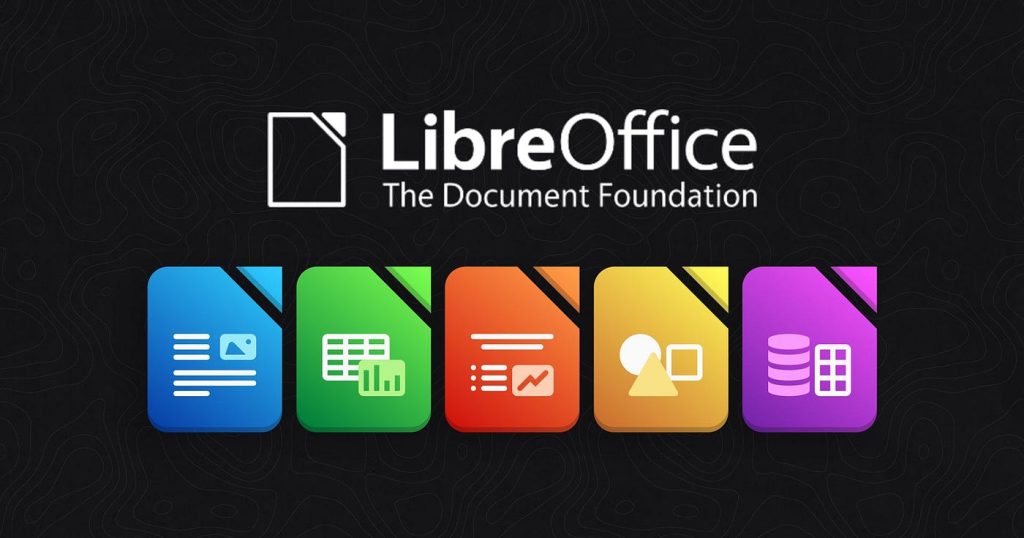
LibreOffice A Free and Open-Source Productivity Suite
LibreOffice, a free and open-source office suite, has gained significant traction in recent years as an alternative to commercial productivity software like Microsoft Office. With its powerful features, cross-platform compatibility, and active community support, LibreOffice offers a compelling option for individuals and organizations seeking a cost-effective and customizable solution.
Core Components of LibreOffice
LibreOffice comprises several essential applications that cater to a wide range of tasks. These include:
- Writer: A word processor used for creating, editing, and formatting documents such as letters, reports, and essays.
- Calc: A spreadsheet application for organizing, analyzing, and manipulating data.
- Impress: A presentation software used to create and deliver presentations with slides, text, images, and multimedia elements.
- Draw: A vector graphics editor used for creating diagrams, flowcharts, and other visual elements.
- Base: A database management system used for storing, organizing, and retrieving data.
- Math: A formula editor used for creating mathematical equations and formulas.
Key Features and Benefits
LibreOffice offers a wide range of features and benefits that can help users improve their efficiency and productivity. Some of the key features to consider include:
- Compatibility: LibreOffice is highly compatible with Microsoft Office file formats, making it easy to import and export documents, spreadsheets, and presentations.
- Customization: LibreOffice can be customized to meet the specific needs of individual users or organizations. This includes creating templates, automating tasks, and customizing the interface.
- Accessibility: LibreOffice is designed to be accessible to users with disabilities. This includes features such as screen readers, keyboard shortcuts, and high-contrast modes.
- Community Support: LibreOffice has a large and active community of users and developers who contribute to its development and provide support.
- Open-Source: As an open-source project, LibreOffice is freely available and can be modified and distributed by anyone. This allows for greater flexibility and customization.
Popular Use Cases
LibreOffice is suitable for a wide range of individuals and organizations, including:
- Businesses: LibreOffice can be used by businesses to create documents, spreadsheets, and presentations. It is a cost-effective alternative to commercial productivity suites and can be customized to meet the specific needs of an organization.
- Educational Institutions: LibreOffice is a popular choice for schools and universities, providing a free and open-source alternative to commercial software. It can be used for teaching students about word processing, spreadsheets, and presentations.
- Individuals: LibreOffice can be used by individuals for personal tasks such as writing letters, creating budgets, and managing projects. It is a versatile tool that can be used for a variety of purposes.
Trends Shaping the Future of LibreOffice
As technology continues to evolve, so too does the landscape of LibreOffice. Several trends are shaping the future of this popular productivity suite:
- Cloud Integration: LibreOffice is increasingly integrating with cloud-based services, allowing users to access their documents and collaborate with others from anywhere.
- Artificial Intelligence: AI is being integrated into LibreOffice to enhance features such as natural language processing, automation, and data analysis.
- Mobile Optimization: LibreOffice is being optimized for mobile devices, allowing users to access their documents and collaborate on projects from anywhere.
- Integration with Other Applications: LibreOffice is increasingly integrating with other applications and services, such as project management tools, CRM software, and communication platforms.
LibreOffice vs. Commercial Productivity Suites
While LibreOffice offers many of the same features as commercial productivity suites like Microsoft Office, there are some key differences to consider. Here are some of the main advantages and disadvantages of using LibreOffice:
Advantages:
- Cost: LibreOffice is completely free, while commercial productivity suites can be expensive.
- Customization: LibreOffice offers a high degree of customization, allowing users to tailor the software to their specific needs.
- Community Support: LibreOffice has a large and active community of users and developers who provide support and contribute to its development.
- Open-Source: LibreOffice is an open-source project, which means it can be modified and distributed by anyone. This allows for greater flexibility and customization.
Disadvantages:
- Feature Parity: While LibreOffice offers many of the same features as commercial productivity suites, there may be some differences in terms of functionality and performance.
- User Interface: Some users may find the user interface of LibreOffice to be less intuitive than that of commercial productivity suites.
- Enterprise Support: Commercial productivity suites often offer more comprehensive enterprise support, including technical support, training, and consulting services.
In conclusion, LibreOffice is a powerful and versatile productivity suite that offers a compelling alternative to commercial software. With its free and open-source nature, powerful features, and active community support, LibreOffice is a great choice for individuals and organizations seeking a cost-effective and customizable solution.






